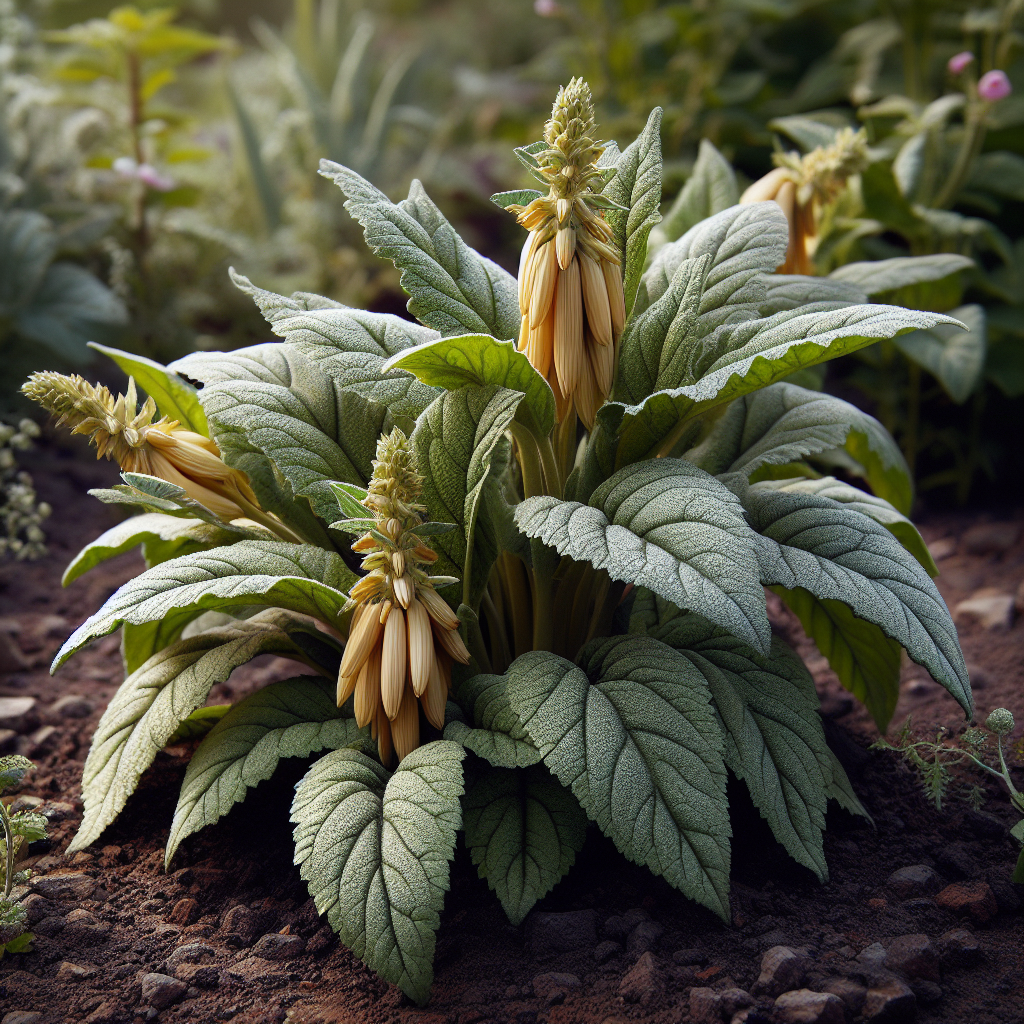Comfrey (Symphytum officinale), a versatile herbaceous perennial originating from Europe, is a prized addition to gardens worldwide. Its large, hairy leaves and bell-like mauve flowers contribute not only to the aesthetic appeal of a garden but also to its ecological vitality. In this guide tailored for hobbyist gardeners, we’ll explore the diverse uses of comfrey and provide tips for successful cultivation.
Botanical Overview
- Botanical Name: Symphytum officinale
- Common Names: Comfrey
- Family: Boraginaceae
Plant Description
Comfrey, with its robust rosette reaching a height of 1 m, features large, hairy leaves and clusters of bell-like mauve flowers. While it rarely flowers in subtropical and tropical regions due to a lack of winter chill, its adaptability spans from cool temperate to tropical climates. Comfrey is particularly hardy, thriving on fertile, well-watered soil.
Uses
- Mulch and Compost Addition: Comfrey leaves, rich in silica, nitrogen, magnesium, calcium, potassium, and iron, serve as an excellent addition to compost or as a nutrient-rich mulch. With its rapid growth, comfrey provides an abundant supply of mulch, making it an invaluable resource in garden ecosystems.
- Soil Conditioning: The entire comfrey plant acts as a superb soil conditioner. Its deep-rooted system penetrates subsoil, accessing nutrients beyond the reach of many other plants. Comfrey aids in nutrient cycling by cutting its leaves and using them as mulch, promoting the health of soils in heavy rainfall areas.
- Weed Barrier: Planted strategically, comfrey acts as a weed barrier, preventing the spread of running grasses. When used in this capacity, it is recommended to plant comfrey in a strip several plants wide.
- Animal Forage: Comfrey flowers attract bees, and its leaves, while nutritious, should be given to poultry in moderation due to potential toxicity issues. Although historically used as animal forage, modern research suggests caution, especially with animals susceptible to pyrrolizidine alkaloids (PAs) present in comfrey.
Planting Details
- Recommended Planting Time: In cool areas, plant in spring; in warmer or tropical regions, plant in the wet season.
- Propagation: Comfrey can be propagated by root cuttings or crown division. For root cuttings, cut pieces of the root (about 3 cm long) are laid horizontally in a prepared garden site or a styrofoam box filled with potting mix. Bury the cuttings 3 cm deep and keep them moist until the first leaves appear.
- Spacing: For a row of comfrey, space the plants at 50 cm apart.
- Growing Details: Minimize root disturbance during planting, as any disturbance can lead to new plant growth. If removal is necessary, covering the clump with wet newspaper and mulch facilitates rotting, leaving behind rich, black compost.
Tips for Hobbyist Gardeners
- Root Disturbance: Minimize root disturbance to prevent unintended propagation; comfrey can readily grow from root fragments.
- Harvesting: Harvest leaves for mulch and compost when they are lush and vibrant, ensuring ongoing nutrient contributions to the soil.
- Adaptation: Recognize comfrey’s adaptability and resilience to a range of climates, from cool temperate to tropical, making it a versatile addition to various garden types.
- Toxicity Awareness: Be aware of the potential toxicity of comfrey, especially for animals susceptible to pyrrolizidine alkaloids (PAs). Exercise moderation, particularly with animal forage.
Comfrey contributes to the ecological balance
Comfrey stands as a multifaceted ally in the hobbyist gardener’s toolkit. From enriching soil health to providing nutrient-rich mulch, comfrey contributes to the ecological balance of a garden. By understanding its uses, planting details, and essential tips, hobbyist gardeners can harness the potential of comfrey to create vibrant, sustainable garden spaces.
